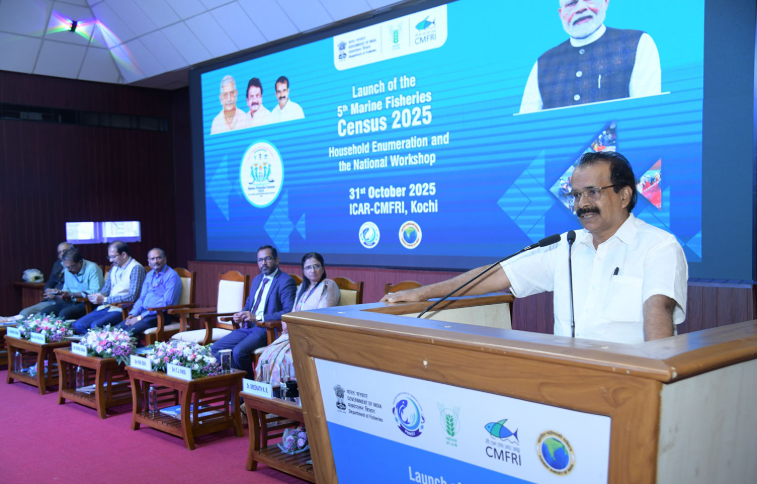In a foundational shift for one of its most vital traditional sectors, India has launched its first-ever fully-digitized National Marine Fisheries Census (MFC), a move set to create the most comprehensive and granular database of the nation’s coastal communities in history. The initiative, driven by the Ministry of Fisheries, Animal Husbandry, and Dairying, replaces decades of paper-based data collection with a modern, app-based approach, heralding a new era of evidence-based policymaking and targeted support for millions of fishers.
This monumental undertaking, which kicked off on November 3rd and will run for 45 days, aims to survey an estimated 1.2 million fisher households across 4,000 coastal villages. The data, collected by the Central Marine Fisheries Research Institute (CMFRI), will capture a wealth of information, from the socio-economic status of families to detailed inventories of fishing vessels, gear types, and the infrastructure at harbors and processing facilities.
Launching the census on October 31st, Union Minister of State for Fisheries, Shri George Kurian, hailed the project as a “paradigm shift.” He emphasized, “This edition marks a major technological shift as the first fully digitised data collection in the history of Indian fisheries.”
A crucial component of this digital transformation is its direct link to government welfare programs. Minister Kurian announced that registration on the new National Fisheries Digital Platform, a key part of the census process, will be a mandatory requirement for fishers and fish farmers to access financial benefits under the Pradhan Mantri Matsya Kisan Samridhi Sah-Yojana (PM-MKSSY). “Only fishermen and fish farmers who are registered on the portal will be eligible to receive financial assistance from the Central government,” he stated, making the census not just a headcount, but a critical gateway to economic support.
The new geo-referenced database is expected to provide an unprecedented level of detail, allowing for more precise and impactful government interventions. According to the ministry, this robust foundation of data will inform everything from infrastructure development to the targeted distribution of essential equipment. As part of this data-driven approach, the government plans to actively install vital scientific equipment, such as transponders for safety and two-way communication at sea, and Turtle Excluder Devices (TEDs) to promote sustainable fishing practices, all free of charge to fishermen.
J. Jayasankar, a principal scientist at CMFRI, noted that while a digital process is inherently faster, the census period has been extended from the traditional 30 days to 45 days, concluding on December 18th. This extension, he explained to The New Indian Express, is a direct result of the vastly expanded scope of the survey, which now delves deeper into the socio-economic fabric of coastal populations to ensure future policies are accurately tailored to their needs.
After extensive preparations, including pre-census workshops and coordination meetings with enumerators and state officials, this fifth edition of the Marine Fisheries Census is set to be the most ambitious yet. By leveraging technology to map its marine resources and the communities that depend on them, India is charting a course toward a more sustainable, prosperous, and secure future for its entire fisheries sector.


